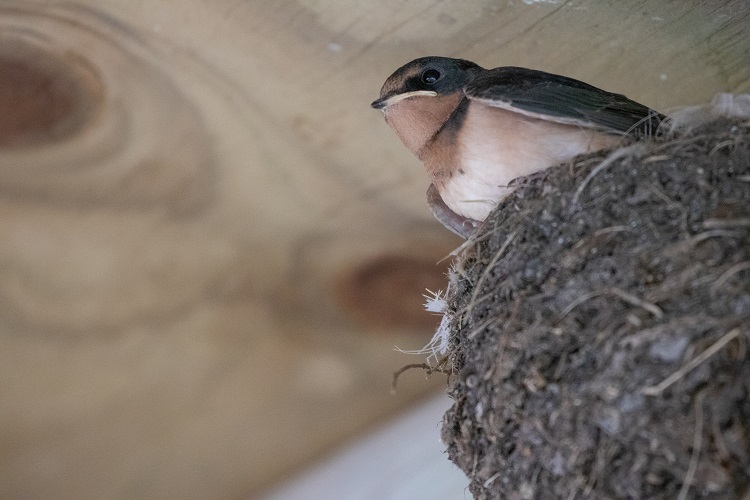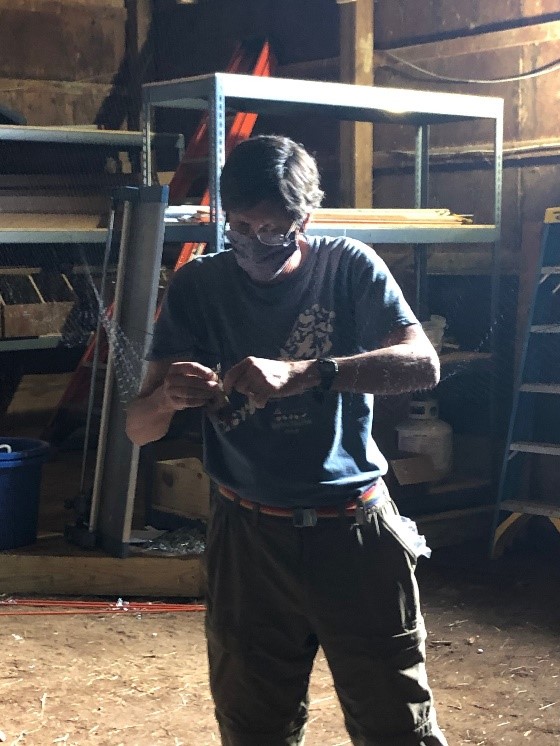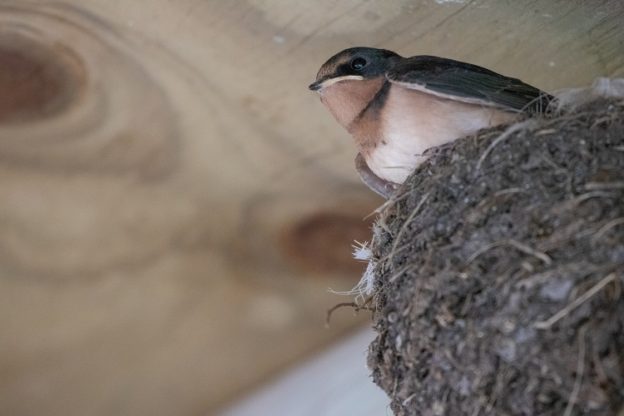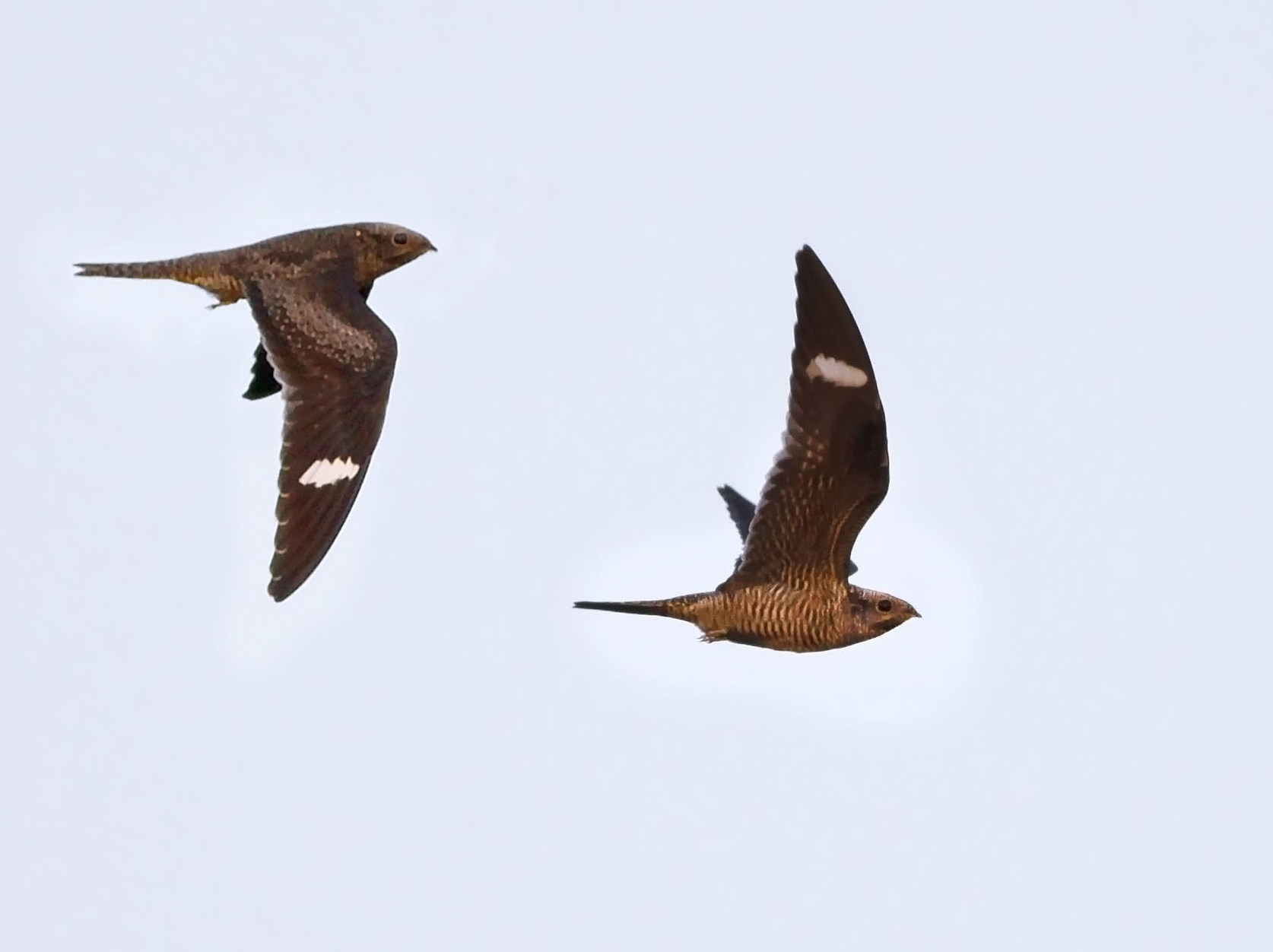
Last summer, Mass Audubon’s Director of Bird Conservation, Jon Atwood, collaborated with Andy French, project leader at the Silvio O. Conte National Fish and Wildlife Refuge, to study Barn Swallows that were nesting in an aging horse stable destined for demolition during the non-breeding season. Approximately 40 pairs of swallows nested in the stable during 2019; an additional 4-7 pairs nested in an adjacent building, known as the Boat House, which the US Fish and Wildlife Service (USFWS) planned to set aside as a more long-term Barn Swallow nesting site and storage area. The aging horse stable was eventually demolished after the resident swallows had migrated to their South American wintering grounds.
The Barn Swallows are back!
We have good news to report! As hoped, the majority of swallows that nested in the stable in 2019 have returned and set up housekeeping in the Boat House. As of June 16 (still relatively early in the breeding season), 30 pairs were actively nesting in the Boat House, and four additional pairs had established nests in nearby artificial structures built for this purpose.

Last year Jon banded many (but not all) of the Barn Swallow adults so that we could tell if they returned to the site in future years. Of 51 birds that have been captured using mist nets in the Boat House in 2020, 22 (43%) had been banded as adults in 2019 in the stable. In other studies, researchers have found that return rates of breeding swallows to undisturbed nesting sites have ranged from 20% in Oklahoma to 42% in New York. Although most Barn Swallows do not return to where they were hatched, we have even captured 2 individuals that hatched from nests that were located last year in the horse stable.
A new kiosk gives an up close look at the birds

USFWS has placed video cameras in the Boat House, and visitors can watch the nesting swallows feed their young from an observation kiosk located near the start of the 1.2 mile long universally-accessible Fort River Birding Trail. Visitors may also be greeted by the families of Tree Swallows and Barn Swallows that are also nesting in the kiosk. The kiosk will eventually house a professionally-designed and fabricated exhibit with information about aerial insectivores.
This success will lead to other successes going forward
Not only does this success story provide a happy ending to the difficult management debate that swirled around the U.S. Fish and Wildlife Service’s decision to remove the horse stable, but these efforts have also paved the way for future conservation actions that can be applied to other situations. Aging barns occupied by Barn Swallows are a common feature in New England’s historically agricultural landscape, and sometimes these structures cannot be saved. Through the experience at Conte Refuge we have learned important lessons about how to attract and relocate Barn Swallows into alternative structures where they can be protected if occupied barns need to be removed.
We’ll keep you posted as the season progresses.



